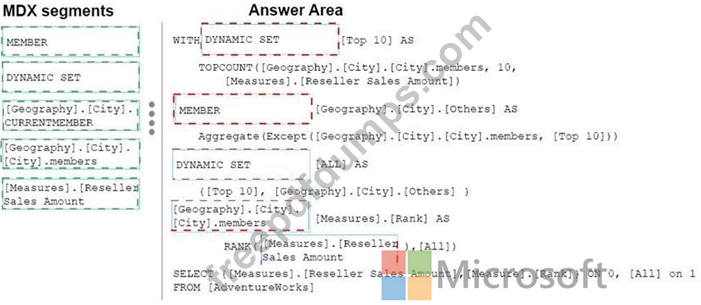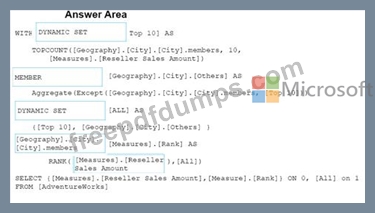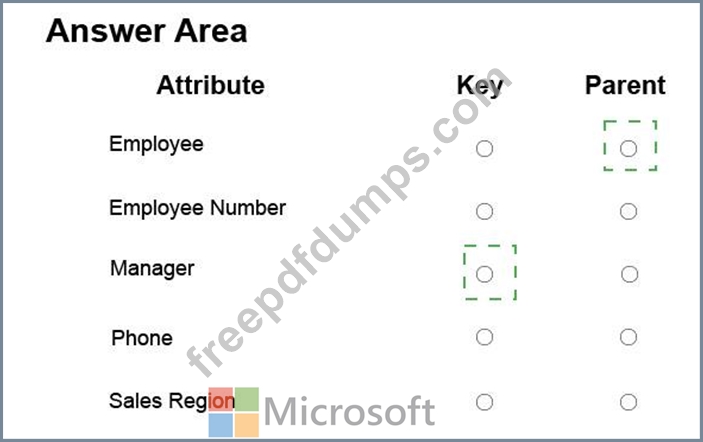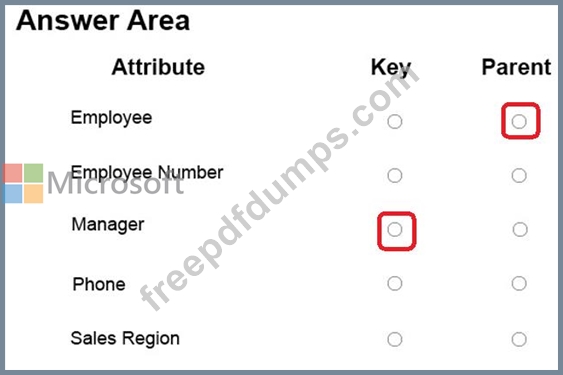070-768 Exam Question 46
Note: This question is part of a series of questions that present the same scenario. Each question in the series contains a unique solution. Determine whether the solution meets the stated goals.
You deploy a tabular data model to an instance of Microsoft SQL Server Analysis Services
(SSAS). The model uses an in-memory cache to store and query data. The data set is already the same size as the available RAM on the server. Data volumes are likely to continue to increase rapidly.
Your data model contains multiple calculated tables.
The data model must begin processing each day at 2:00 and processing should be complete by 4:00 the same day. You observe that the data processing operation often does not complete before 7:00. This is adversely affecting team members.
You need to improve the performance.
Solution: Enable Buffer Cache Extensions.
Does the solution meet the goal?
You deploy a tabular data model to an instance of Microsoft SQL Server Analysis Services
(SSAS). The model uses an in-memory cache to store and query data. The data set is already the same size as the available RAM on the server. Data volumes are likely to continue to increase rapidly.
Your data model contains multiple calculated tables.
The data model must begin processing each day at 2:00 and processing should be complete by 4:00 the same day. You observe that the data processing operation often does not complete before 7:00. This is adversely affecting team members.
You need to improve the performance.
Solution: Enable Buffer Cache Extensions.
Does the solution meet the goal?
070-768 Exam Question 47
You are developing and application to track customer sales.
You need to return the sum of orders that have been finalized, given a specified order identifier.
This value will be used in other Transact-SOL statements.
You need to create a database object.
What should you create?
You need to return the sum of orders that have been finalized, given a specified order identifier.
This value will be used in other Transact-SOL statements.
You need to create a database object.
What should you create?
070-768 Exam Question 48
DRAG DROP
You are a business analyst for a retail company that uses a Microsoft SQL Server Analysis
Services (SSAS) multidimensional database to track sales. The database contains the following objects:

Your company is developing a promotional plaque to recognize the top resellers in the top
1 0 cities where the company does business. Each plaque must display the sales total for all resellers in the city. In addition, the plaque must display a total for all cities not in the top
1 0.
You have the following requirements:
You need to provide the information needed for the promotional plaques.
How should you complete the MDX statement? To answer, drag the appropriate MDX segments to the correct locations. Each MDX segment may be used once, more than once, or not at all. You may need to drag the split bar between panes or scroll to view content.
NOTE: Each correct selection is worth one point.
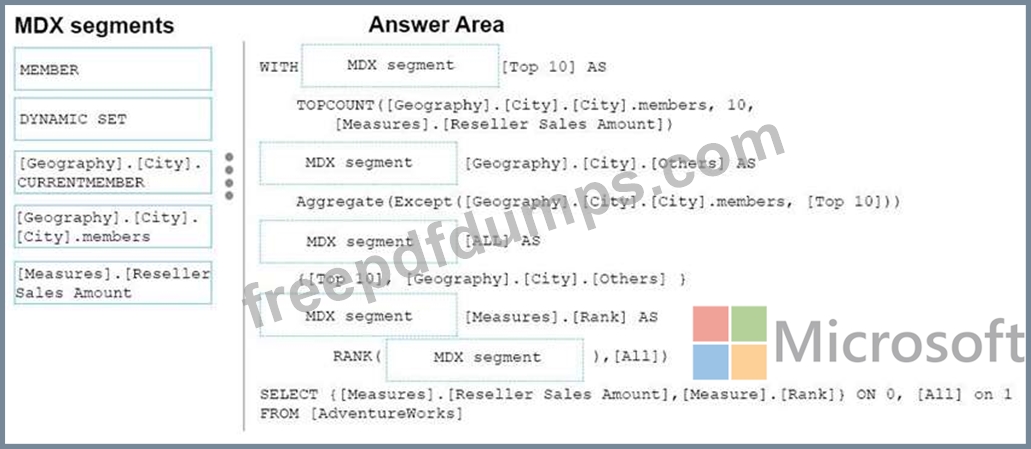
You are a business analyst for a retail company that uses a Microsoft SQL Server Analysis
Services (SSAS) multidimensional database to track sales. The database contains the following objects:

Your company is developing a promotional plaque to recognize the top resellers in the top
1 0 cities where the company does business. Each plaque must display the sales total for all resellers in the city. In addition, the plaque must display a total for all cities not in the top
1 0.
You have the following requirements:
You need to provide the information needed for the promotional plaques.
How should you complete the MDX statement? To answer, drag the appropriate MDX segments to the correct locations. Each MDX segment may be used once, more than once, or not at all. You may need to drag the split bar between panes or scroll to view content.
NOTE: Each correct selection is worth one point.

070-768 Exam Question 49
Note: This question is part of a series of questions that present the same scenario. Each question in the series contains a unique solution. Determine whether the solution meets the stated goals.
You deploy a tabular data model to an instance of Microsoft SQL Server Analysis Services
(SSAS). The model uses an in-memory cache to store and query data. The data set is already the same size as the available RAM on the server. Data volumes are likely to continue to increase rapidly.
Your data model contains multiple calculated tables.
The data model must begin processing each day at 2:00 and processing should be complete by 4:00 the same day. You observe that the data processing operation often does not complete before 7:00. This is adversely affecting team members.
You need to improve the performance.
Solution: Change the storage mode for the data model to DirectQuery.
Does the solution meet the goal?
You deploy a tabular data model to an instance of Microsoft SQL Server Analysis Services
(SSAS). The model uses an in-memory cache to store and query data. The data set is already the same size as the available RAM on the server. Data volumes are likely to continue to increase rapidly.
Your data model contains multiple calculated tables.
The data model must begin processing each day at 2:00 and processing should be complete by 4:00 the same day. You observe that the data processing operation often does not complete before 7:00. This is adversely affecting team members.
You need to improve the performance.
Solution: Change the storage mode for the data model to DirectQuery.
Does the solution meet the goal?
070-768 Exam Question 50
HOTSPOT
You have a Microsoft SQL Server Analysis Services (SSAS) multidimensional project. You are developing a dimension that uses data from the following table:
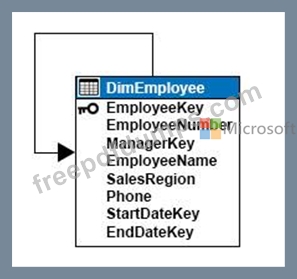
The ManagerKey column defines a foreign key constraint that references the EmployeeKey column. The table stores employee history information by using slowly changing dimensions (SCD). Changes to EmployeeName, Phone, or ManagerKey are managed as SCD Type 1 changes. Changes to SalesRegion are managed as SCD Type 2 changes.
You create the following attributes, and set the KeyColumns and NameColumn properties to the columns listed in the table below:

You need to add a parent-child hierarchy to the dimension to enable navigating the organization hierarchy.
In the table below, identify the attribute that you must use for each attribute usage type.
NOTE: Make only one selection in each column.
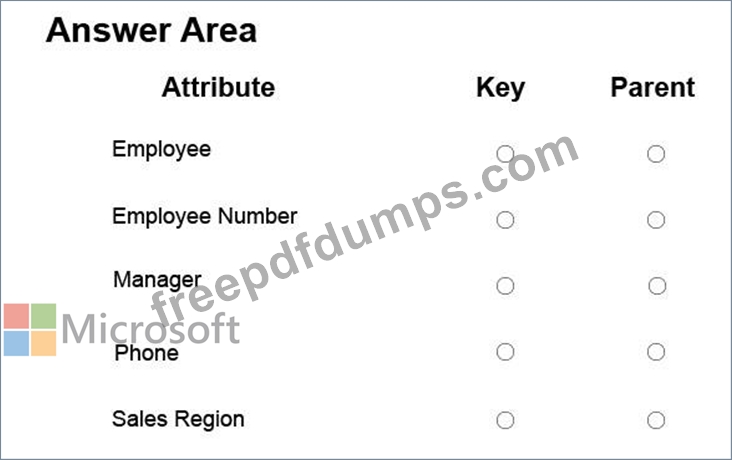
You have a Microsoft SQL Server Analysis Services (SSAS) multidimensional project. You are developing a dimension that uses data from the following table:

The ManagerKey column defines a foreign key constraint that references the EmployeeKey column. The table stores employee history information by using slowly changing dimensions (SCD). Changes to EmployeeName, Phone, or ManagerKey are managed as SCD Type 1 changes. Changes to SalesRegion are managed as SCD Type 2 changes.
You create the following attributes, and set the KeyColumns and NameColumn properties to the columns listed in the table below:

You need to add a parent-child hierarchy to the dimension to enable navigating the organization hierarchy.
In the table below, identify the attribute that you must use for each attribute usage type.
NOTE: Make only one selection in each column.



